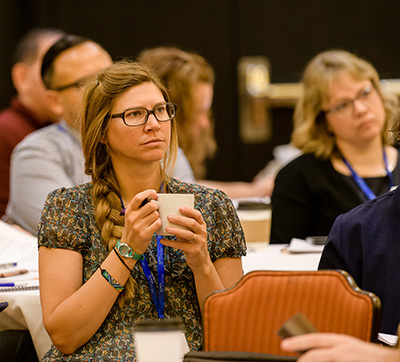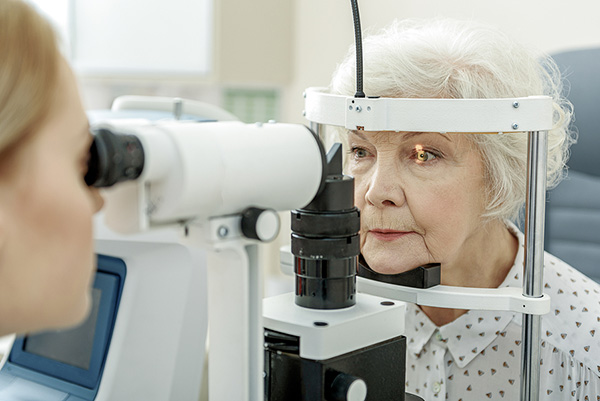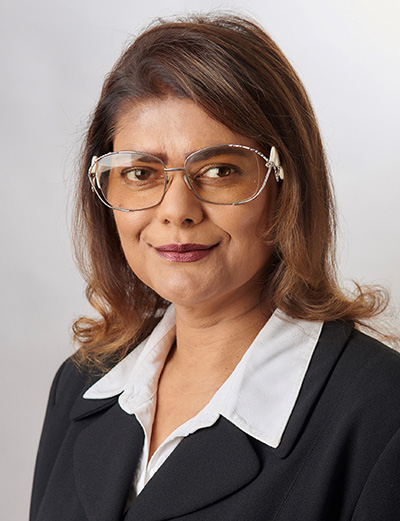AFB Pilots Employment Summit to Foster Collaboration, Create Opportunities
Gathering will convene leaders from across sectors to develop action plans
AFB isn’t satisfied with the status quo, especially when it comes to the employment rate of people who are blind or visually impaired, which persistently hovers around 35 percent. That’s why AFB is taking decisive action to address this significant challenge.
This fall, AFB is piloting an employment summit in Albany, New York, to engage with partners — both national and regional — and develop strategies to foster collaboration, maximize impact, and track outcomes. This pilot will serve as a model for similar summits across the country. AFB is convening leaders from the corporate, government, and nonprofit sectors who focus on diversity and inclusion, job readiness, accommodations, and employment policy. The goal is to foster dialogue about employer needs, create solutions, and forge meaningful partnerships that lead to sustainable employment opportunities.
“One of AFB’s key strategic objectives is to reduce the unemployment and underemployment rate of people who are blind or visually impaired, and help employers harness the talent that exists in the community,” says Kirk Adams, President and CEO of AFB. “By the end of the summit, we’ll have an action plan to improve outcomes for people who are blind or visually impaired and help them contribute both to the workplace culture and the bottom line.”
AFB is focusing the employment summit on knowledge-based work in four sectors identified as being robust for growth in the U.S. economy: financial services, information and technology, healthcare, and federal contracting. The employment summit will center on three main topic areas:
- Discussing employer challenges, including hiring initiatives and workplace accommodations.
- Learning about employee success stories and challenges.
- Connecting influencers to work out an action agenda that leads to measurable outcomes — specifically increasing employment rates among people who are blind or visually impaired and advancing the careers of those who are already employed.
Attendees will discuss a variety of issues, such as challenges faced by vocational rehabilitation and job placement professionals. In addition to exploring corporate programs on disability awareness for hiring managers, attendees will hear directly from employees about their experiences on the job. Attendees will also explore the role of government, with an emphasis on how government can best connect with employers and a look at government regulations that stifle hiring initiatives. The summits will address not only employment for new workers, but also for those with experience who are adjusting to vision loss.
The pilot employment summit is by invitation only and will include about 50 attendees. For the pilot, the emphasis will be on issues specific to the state of New York, and future summits will be tailored to the needs of the region where they are held.
“AFB is excited about the potential these employment summits hold,” Adams says. “By collaborating with partners across sectors, we can create a world of no limits that benefits both people who are blind or visually impaired and the companies where they work.”
A Personal Commitment to Philanthropy
AFB Board member Alan May on his reasons for giving back
Like many people who have served on AFB’s Board of Trustees over the years, Alan May has a very personal connection to blindness. For the last 16 years of her life, his mother was blind, having lost her vision at age 76 to large cell arteritis. May experienced firsthand how life-changing blindness is, especially for older adults.
“Fortunately, she had my father to help her, but it became clear very quickly that she needed a whole new set of coping tools and abilities to communicate and fully understand the outside world,” says May, who is Executive Vice President, Human Resources at Hewlett Packard Enterprise. “She was the beneficiary of many organizations that were assisted in some way by AFB.” Not long after his mother died, May received a call from AFB Board member Elcio Barcelos, asking if he would think about joining the Board. He considers that call “serendipitous.”
“I’m delighted to be a Board member, in appreciation for all AFB does for people in these circumstances, like my late mother,” says May, who joined the Board in November 2017. “It’s also a chance to pay it forward and I’m highly energized by the strategic plan that Kirk Adams and the Board put together last year.”
Not surprising given his decades of experience in human resources — previously at The Boeing Company, Cerberus Capital Management, and PepsiCo — May has a particular interest in AFB’s priority of improving employment and employability for people who are blind and visually impaired.
He also intends to focus his attention on AFB’s public policy and public advocacy efforts, and on increasing financial support for AFB. In fact, May has already had an immediate impact on significantly improving fundraising for the organization, and will continue building on that progress.
“All nonprofits need financial resources to do what they do,” he says. “I think it’s incumbent on any Board member of a nonprofit to maintain responsibility for ongoing development of the organization in addition to their personal financial commitment.”
There’s a fourth area to which May believes he can contribute considerable expertise and resources, and that’s technology. As a member of the Silicon Valley business community, he says he’s intrigued to work across companies to identify new ways technology can assist people who are blind and visually impaired. “I’m very excited as I see developments within the tech industry,” May says. “But unless we engage that now and build that inclusive design thinking within tech firms, we won’t get there. So that’s the sense of urgency for me right now.”
Creating a World of No Limits for Older Adults with Vision Loss
How AFB is working to drive meaningful change in this priority issue area
In the last issue of FOCUS, we highlighted the three main priorities for AFB’s work right now: education, employment, and aging and vision loss. Addressing these issues is pivotal to transforming systems and beliefs that currently hold back people who are blind or visually impaired.
Aging and vision loss is a particularly pressing area of concern. Most older adults with vision loss aren’t getting the training and support they need to live independently. That’s why AFB is working with key partners to transform agingrelated services and support so older adults with vision loss can live with no limits.
Right now, Medicare, Medicaid, and private insurance companies don’t offer meaningful coverage for the visionrelated rehabilitative services and devices older adults with vision loss need. What’s more, only 2% of older people who need specialized training in independent living skills receive it, due to lack of funding and trained service providers, among other factors. The problem is only going to become more critical as the population ages — especially the Baby Boomer generation, which currently accounts for nearly 75 million Americans.
That’s why AFB has mobilized a national advocacy strategy to dramatically increase federal funding and implement the structural reforms needed to strengthen the breadth, quality, and availability of services available to older adults with vision loss.
The 21st Century Agenda on Aging and Vision Loss is a dynamic, AFB-facilitated nationwide collaboration that has already started yielding results by bringing together the most significant national stakeholder organizations and experts. This coalition is addressing the four main challenges of aging and vision loss:
- Funding for services
- The number and quality of professionals
- Coordination of service delivery to maximize existing resources
- The availability of low vision devices and other assistive technologies
For example, AFB is partnering with service delivery programs to ensure that older Americans with vision loss receive the skills and training they need. We’re also working on improving the knowledge and awareness of physicians, allied health professionals, and others in a position to assist older adults who are blind or visually impaired.
In addition, we’re creating and strengthening public- and private-sector partnerships, so we can drive the adoption of policies and best practices for making workplaces, senior centers, and communities more welcoming for older people who are blind or visually impaired.
AFB is also expanding our policy research capacity to conduct and promote original quantitative and qualitative research. We are leading the vision loss community in the development of a long-term research agenda addressing the intersection of aging, public health, and living with vision loss, to provide evidence-based support for our advocacy.
Working in conjunction with the 21st Century Agenda on Aging and Vision Loss coalition and other partners, AFB’s advocacy and research are creating a world of no limits for older adults who are blind or visually impaired.
We’ll take a closer look at another of AFB’s priorities in the next issue of FOCUS.
What Does the World Look Like to You?
In this issue of FOCUS, we’re introducing a regular feature that asks people who are blind or visually impaired to share their real-world experiences.
Vanna Rapeti is a successful real estate entrepreneur, who is currently a housing and management consultant. She’s also a philanthropist who was honored with a Lifetime Philanthropy Award from the George W. Bush administration. She is an active board member of the Audio Internet Reader Service of Greater Los Angeles and the Blind Dance Company, which seek to bring a voice to the visually impaired community. One of her future goals is to develop inclusive and accessible housing as she continues to advocate for people with disabilities, with an emphasis on blindness, so they can live more full and complete lifestyles.
When did you first experience vision loss?
I became legally blind about five years ago, at the age of 45. Although now thinking back, I experienced symptoms of vision loss about two to three years before my final diagnosis. The diagnostic process was a learning experience for both the medical experts and myself, and I urge people who notice early vision loss signs to get multiple treatment and diagnosis opinions before getting treatment for their vision loss. As you can imagine, going from a sighted world to a legally blind and adjusted lifestyle requires discipline and new ways of living in a sighted world. While there are lots of tools and equipment that help people navigate to their adjusted vision, there is a lot of room to improve technology to further help people adjust to their new lifestyle.
What surprises people about your life?
That career success is strictly about being competitive in your field. Nobody wants to employ someone who can’t compete, whether you have vision or not. I’m successful because I love my work and I know my skill set, so I can provide the best service.
Have you ever been in a situation where people tried to put limits on your aspirations because of your visual impairment? How did you have to advocate for yourself?
The world is a visual world, but you can’t think of being blind as an impediment. You have to be self-motivated and advocate for yourself. You also have to seek out the resources you need, which I did by using my skills in networking and relationship-building with doctors, teachers, and others who are blind or visually impaired. Once I’d adjusted to being blind — when you go through a major life change you have to become comfortable, because if you’re not comfortable the world is not going to be comfortable — I started to re-evaluate the duties I’d once performed in marketing, training, and development in all aspects of real estate. I realized I could do everything I always did. It just required training.
What do you wish more people understood about what it means to be blind or visually impaired?
That it’s about who you are as a person, not about your blindness. When people who are blind or visually impaired have the right training and opportunities they can pretty much do any job they want to do.
What advice would you give people who are blind or visually impaired about living with no limits?
Find work that you are passionate about, like I did. But the only way to choose what you want to do is with training. So do your homework. Educate yourself every day in things like technology. Computer skills are imperative and you have to keep up with them. There are so many technologies that you can use, you just have to know how to use them and be good at it.
AFB Sponsors Race Across America Team
AFB is proud to be a lead sponsor of Team Sea to See, which is competing in the 2018 Race Across America (RAAM) June 16-25. The team is made up of successful businesspeople and athletes with one thing in common: They are blind. RAAM challenges individual cyclists and relay teams to ride from the Pacific to the Atlantic in record time — nine days or less. Team Sea to See entered the world’s most grueling endurance cycling race to prove that people who are visually impaired can succeed in any field, which they believe is essential to empowering people who are blind and changing society’s perceptions. With a goal of reducing the high unemployment rate among people who are blind or visually impaired, Team Sea to See is competing to show what blind success looks like, on and off the bike. Watch for a feature on Team Sea to See in the next issue of FOCUS and learn more at www.teamseatosee.com.
AFB and Comcast Release Survey of TV-Watching Habits
AFB and Comcast commissioned a survey of people who are blind and visually impaired to gauge TV-watching behaviors and awareness of accessible technologies. The results, which were released earlier this year, show that a majority of people who are blind or visually impaired watch four or more hours of TV per day — almost as much as the general public. Many of the people surveyed reported that assistive technologies like video description, text-to-speech, and voice control are helpful as they watch TV. However, according to the study, too many people don’t know about these tools. Look for a story in the next issue of FOCUS recapping the research findings.




